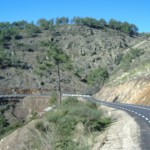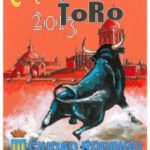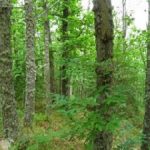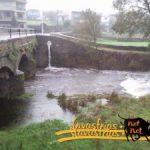Today in CyL news they mention The Rebollar. We leave a part of that text and at the end a link to see the full article.
The location of the Natural Space in the SW end of the Community from Castilla y León, on the same border - called dry- with Portugal and bordering with Extremadura, with whom he shares life, vegetation and ethnography –specifically Greenhouse from Malcata already The Urdes-, makes the Atlantic influences intense, although phytosociologically this Salamanca territory is located in the Mediterranean region. Wood ecosystems are for the most part rebollo or melojo oak forests, distributed throughout the area mountainous, along with holm oaks, less important and located in the more xeric spaces and far from the mountain influence.
The
oak forests are the most abundant to the point of giving its name to this
A natural space, although they have suffered significant reductions such as
consequence of human action. Also important are the
coniferous reforestation, usually with two species, pine
pinaster and in high areas the Pinus sylvestris which is scarce. In the
Alder-based vegetation appears on the banks of the rivers, willows and
ash trees. The scrub formations are very varied: brooms
common in the most deforested areas, heaths that dominate in the
slate floors, jarales, typically Mediterranean bushes that
They thrive in highly degraded soils and where the most typical species is the
sticky rockrose, living with the jaral, the thyme appears, where
thyme and cantuesos dominate, and the thorn trees frequent throughout the
Space.
One of the most outstanding features of the fauna in El
Rebollar is the diversity of species. The vertebrate catalog
includes 229 species, of which 180 They are safe breeders and 49
The rest are divided into different categories of presence.
There are three most significant species, all of them considered in danger of extinction or vulnerable: the black stork, the black vulture and the lynx. But along with them there are many other species of great interest: Among the mammals, the wolf stands out, the nutria, the Wildcat, the mongoose, Cabrera's vole, badger or polecat, entre otros.
As for the aves The presence of species such as the blue kite draws attention, let's go, griffon vulture, short-toed eagle, Montagu's harrier, hawk, azor, imperial eagle, Golden Eagle, Bonelli's eagle, lesser kestrel, alcotan, Peregrine falcon.
Por último, the field of reptiles not left behind (blind shingles, iberian skink, green lizard, bocage lizard, snout viper, …); just like that of amphibians (iberian newt, sapillo peak, Iberian partero frog, rana patilarga, …) and the fish (common trout, Iberian barbel, …) They have an important representation here.
A
natural region of undoubted ecological interest, where a problem lies
very important, What is the depopulation that has been experienced in recent years?.
The lack of job opportunities for young people leaves people without
these towns, reason that has led mayors concerned about this
serious matter to look for economic alternatives such as the production of
resin or mycology, but this is flour for another story.
Complete news
https://www.noticiascyl.com/t/2124388/cyl-turismo-rebollar-paseo-entre-robles-tierras-frontera




